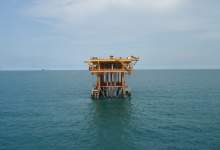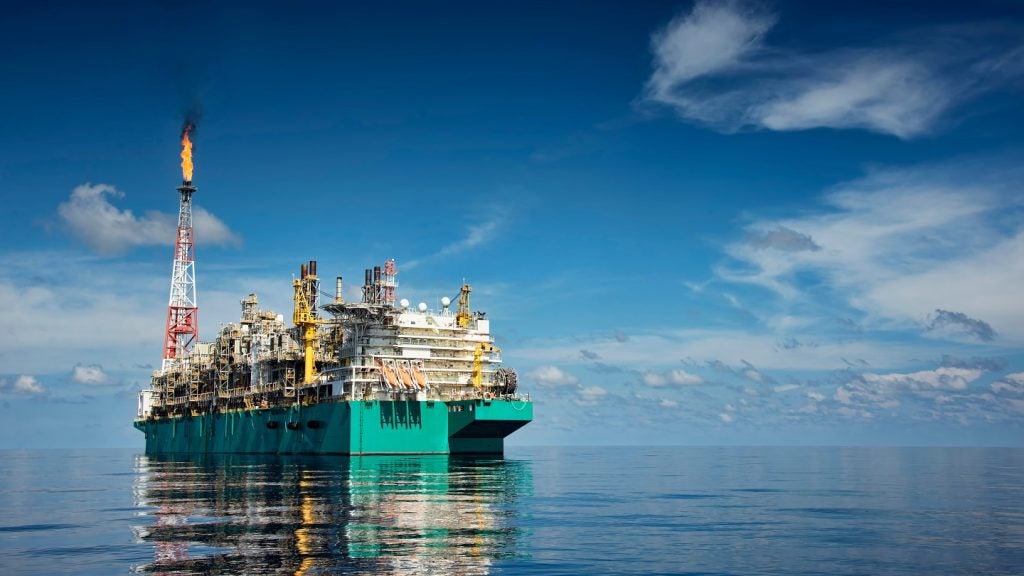

Since the latter half of 2014, the offshore oil and gas industry has been primarily concerned with the falling price of oil, which has dropped as much as 27% a barrel since early summer. One of the major talking points is whether or not oil prices will rise in the future relative to the continued growth of exploration and production (E&P) costs.
This year has also seen a softening of the oil rig market caused, in part, by an oversupply in the market and worsened by project delays; a result of the unsettled commodities price. Meanwhile, West Africa has seen increased activity and Brazil’s offshore market has boomed. Companies have also been watching Mexico with keen interest as the country prepares to launch its first offshore licence round for over 70 years.
Africa: a development hotspot in 2015
Content analyst at Infield Systems Limited, Catarina Podevyn, says Africa is expected to hold a 15% share of offshore capital expenditure over 2015, up 10%, led by developments offshore Angola. In West Africa, offshore Ghana and Congo will also see increasing expenditure, she adds.
"Total’s giant, the Egina development offshore Nigeria, is anticipated to be the single most capital intensive project offshore West Africa over 2015, acting to drive down Angola’s leading, albeit still dominant, share in the region," Podevyn says.
See Also:
According to an International Energy Agency (IEA) special report published in October 2014, almost 30% of global oil and gas discoveries made over the last five years were in Sub-Saharan Africa, which reflects a growing global appetite for African resources.
How well do you really know your competitors?
Access the most comprehensive Company Profiles on the market, powered by GlobalData. Save hours of research. Gain competitive edge.

Thank you!
Your download email will arrive shortly
Not ready to buy yet? Download a free sample
We are confident about the unique quality of our Company Profiles. However, we want you to make the most beneficial decision for your business, so we offer a free sample that you can download by submitting the below form
By GlobalDataThe digital oil field could help address the industry’s labour shortage, but only if the right skills are in place.
Recent gas discoveries in Africa include the large Mamba and Prosperidade field offshore Mozambique. Meanwhile, oil has been found offshore Kenya by Pancontinental Oil and Gas NL. The find is reported to be the first oil discovery off the East African coast.
Senior writer at Platts, Robert Perkins agrees that Africa is set to be a "huge hotspot for exploration offshore, especially deepwater blocks". However, he cautions that although there are a lot of wells planned there, they are extremely costly.
"You could argue it is fairly costly, so [the region] is vulnerable to CAPEX constraints if oil companies begin to reel back on exploration due to a lower oil price," Perkins adds. "There is a lot of difficult geology and it can be a tough environment in terms of government dealings, which complicates things further."
Mexico: first licensing round due
This year Mexico’s government passed a law that will allow foreign and private domestic energy companies to explore, produce and refine oil for the first time since 1938.
The first licensing round is scheduled for next year and will include both onshore and offshore blocks. The licensing round is expected to prove popular with companies eager to get a share of the country’s 10.3 billion barrels (bb) of oil and 17.3 trillion cubic feet of natural gas in offshore proven reserves.
Deepwater will be the main attraction for foreign companies and it is here that state-owned Pemex has expressed a need for outside expertise.
However, deepwater exploration and production is risky, technologically challenging and capital intensive, so without an attractive fiscal regime and sturdy oil price investments may be limited.
However, in terms of legislation Perkins says: "They [the government] seem to be making a good stab at cutting red tape to make it more attractive. There are potentially some interesting places to be had in the Gulf of Mexico."
Increased deepwater drilling offshore Mexico could also open up opportunities in the deepwater supply chain.
Capital expenditure: where will it be spent?
According to a forecast from analysts Douglas Westwood, the Americas, along with Africa, will continue to dominate deepwater CAPEX spending with $213bn set to be spent over the next five years. Latin America will remain the largest market, according to the report. However, most of this will likely be spent in 2016, rather than 2015 due to "delays to delivery of FPS units in Latin America" according to the report.
Fracking has become a hugely controversial operation onshore, but at sea it has been in use for 20 years with little argument.
Podevyn says, however, that Latin America, driven by Brazil, is expected to form 21% of global offshore CAPEX spending over 2015, which is actually a decline from its 25% share in 2014.
"This is predominately a result of a number of capital intensive projects coming to a close in 2014, including Iracema Sul, which commenced production in October 2014," she says.
She adds that Europe could account for the largest global share of capital expenditure over 2015, with a 22% market share, up by 42%. This will be dominated by a number of giant pipeline projects, led by the possible South Stream development. However, it’s likely, due to geopolitical tensions, that this could be further delayed.
In regards to other regions, she says North America’s share of global offshore CAPEX in 2015 is expected to increase by 11%, Australasia 6% and Asia 1%.
However, Perkins warns, areas with higher costs and more complex geology – such as Africa, Gulf of Mexico and North Sea – could also see cutbacks.
"The most vulnerable areas are going to be the most costly – ultra deep water, high risk, where it is more expensive to drill – they are the ones that would suffer first with potential delays in project timelines on existing discoveries," he adds.
Monica Schnitger of Schnitger Corporation told an audience at the 2014 Bentley Year in Infrastructure conference held in November that any slowdown will only be temporary.
"I see a lot of people coming to me, talking about investments that could have been made in 2014 but that are being pushed out to 2016, but really, things that are in the pipeline now are going to keep on going," said Schnitger.
"We might have some slight slowdown, but it is nothing to get excited about."
Oil price: will there be further volatility?
Asked about the future of the oil price, Perkins says: "I think the consensus is anything between $80- $100 a barrel – a broad range, but given that we have had the softness for four months of the year, certainly, expectation has come off for the next 12 months in the markets."
"Most oil analysts will probably say they have downgraded their expectations somewhat."
Last week Deutsche Bank lowered its forecast for Brent Crude, predicting an average price of $89 to $90 per barrel until 2018. It also brought its long-term estimate down from $105 to $90 per barrel.
Safety is an operational imperative for the oil and gas industry, but what about the more subtle health effects of the offshore lifestyle?
Schnitger stated that there is "no need to panic over the price of oil" as most projects were commissioned when the price was half what it currently is.
Jon Clark, a partner at EY’s EMEIA Leader Oil & Gas Transaction Advisory Services, agrees the price dip is only temporary: "I think there might be a short term drop, but the longer price has stayed relatively stable and that is what drives the decision on capital investment."
Challenges: securing the supply chain
Looking to 2015, one of the challenges the industry faces, says Clark, is securing robustness of the supply chain.
"You have pressure driven by the commodity price on different parts of the supply chain," he says. "If the oil price falls the only way the producers will make their margins is to put pressure on costs, and if there is cost pressure in the supply chain, how do you then make sure your supply chain is still robust enough to deliver services on long-life projects like offshore oil and gas?"
He adds that changing fiscal regime will also be a big challenge, as well as prioritising portfolio management.
This need to reduce costs and stay competitive will affect the oil rig market as well, says Perkins.
"The offshore rig market has softened quite a lot this year and that was before oil prices were coming off," Perkins says. "For owners of offshore rigs, in particular, we have seen lots of pessimistic comments for the next 18 – 20 months, in terms of day rates."
According to the Financial Times, at the beginning of November Transocean told analysts the offshore oil and gas industry has gone into a cyclical downturn. Transocean had just reported its results for the third quarter, which included a $2.22bn loss following an asset write-down, and a 7 % drop in revenues to $2.27bn. However, CEO, Steve Newman said the company was well placed to weather such storms.
In terms of future challenges, Podevyn sums up the mood for offshore oil and gas in 2015 by saying: "Low energy prices will continue to affect investment decisions, particularly on capital intensive developments where economic gain is marginal – high risk areas, whether this be environmental or political, will undoubtedly be met with caution when operators assess development plans."


.gif)



